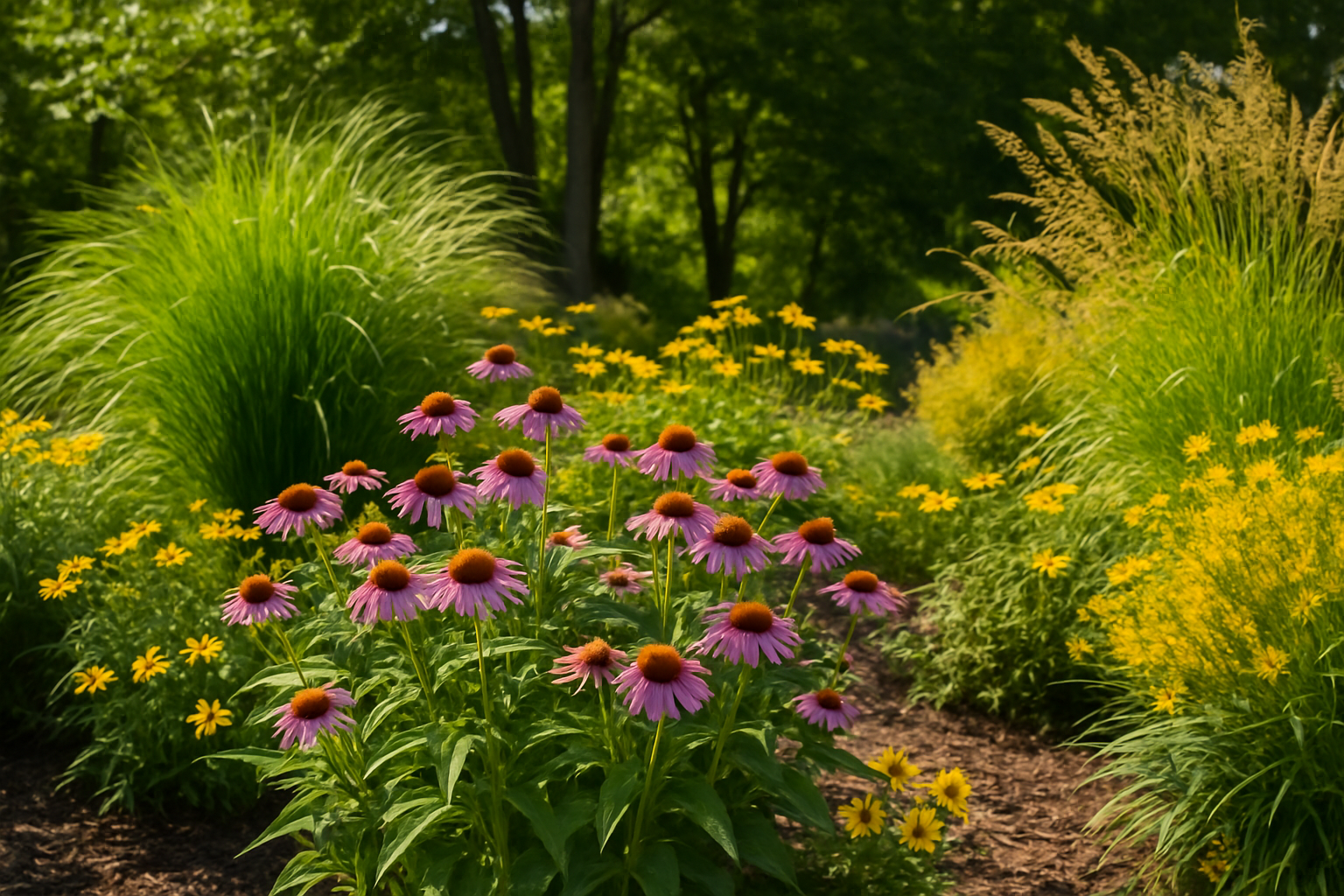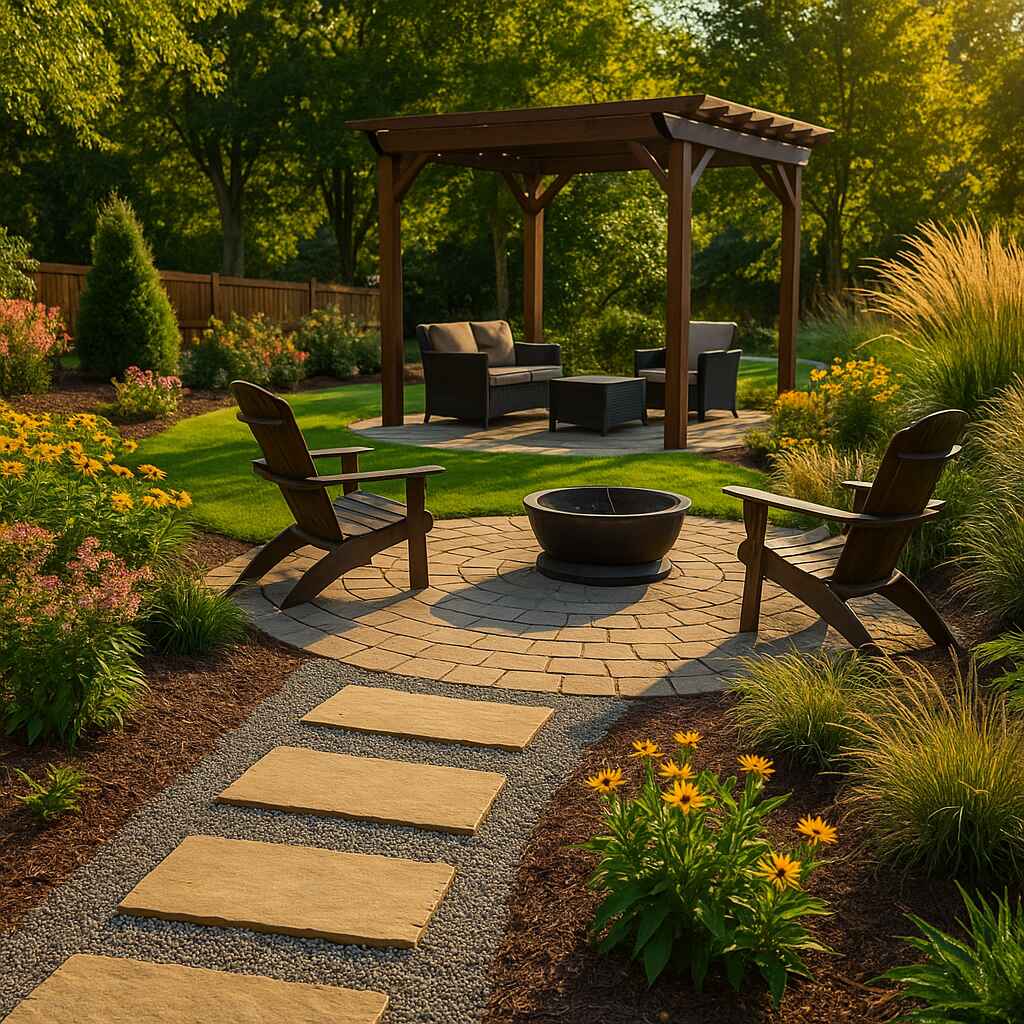Native Plants That Thrive in Knoxville Landscapes

Native Plants That Thrive in Knoxville Landscapes
Knoxville, Tennessee is known for its rolling hills, rich biodiversity, and temperate climate — all of which provide an ideal setting for stunning landscape design. At Dodson Designs, we help homeowners across East Tennessee create beautiful, functional, and sustainable outdoor spaces by embracing the use of native plants. Why native? Because they thrive with less maintenance, require less water, and support local wildlife.
In this in-depth guide, we’ll explore a wide variety of native plants perfectly suited to Knoxville landscapes, organized by category, along with expert tips on planting, design ideas, and how to incorporate these plants into your yard for a resilient, low-maintenance, and ecologically balanced garden.
Why Use Native Plants in Knoxville Landscaping?
Native plants are species that have naturally evolved in a region over thousands of years. In Knoxville, that includes species adapted to the local soils, rainfall, temperature ranges, and native insects.
Top benefits of using native plants:
- Require less water and fertilizer
- Are more resistant to local pests and diseases
- Support pollinators, birds, and beneficial insects
- Help preserve Tennessee’s natural heritage
- Thrive with less maintenance
At Dodson Designs, our landscape projects often combine native plants with thoughtful hardscaping and irrigation design to maximize beauty while minimizing long-term care.
Top Flowering Perennials for Knoxville Yards
These native perennials add bursts of color, texture, and seasonal interest while supporting local pollinators:
1. Black-Eyed Susan (Rudbeckia hirta)
- Bright yellow petals with dark centers
- Blooms from summer to fall
- Attracts bees and butterflies
2. Purple Coneflower (Echinacea purpurea)
- Large purple-pink flowers with cone-shaped centers
- Long blooming period
- Drought-tolerant once established
3. Butterfly Weed (Asclepias tuberosa)
- Orange flowers beloved by Monarch butterflies
- Low-growing and great for borders
- Deep taproot resists drought
4. Wild Bergamot (Monarda fistulosa)
- Lavender-pink blooms with minty-scented foliage
- Pollinator favorite, especially for bees and hummingbirds
- Deer resistant
5. Blue False Indigo (Baptisia australis)
- Spikes of blue flowers in spring
- Excellent structure and foliage color
- Tolerant of poor soil conditions
Design Tip: Layer perennials of varying heights and bloom times to ensure color and interest from spring through fall.
Native Grasses for Structure and Movement
Grasses are ideal for adding texture, seasonal motion, and durability to your landscape. Here are some native East Tennessee grasses we love:
1. Little Bluestem (Schizachyrium scoparium)
- Fine blue-green blades that turn rust-orange in fall
- Great for erosion control
- Deer and drought resistant
2. Switchgrass (Panicum virgatum)
- Upright habit with airy plumes
- Thrives in wet or dry soil
- Winter interest and bird habitat
3. River Oats (Chasmanthium latifolium)
- Graceful, nodding seed heads
- Ideal for shady or semi-shaded areas
- Self-seeding, so give it space
4. Eastern Gamagrass (Tripsacum dactyloides)
- Bold, fountain-like form
- Supports butterflies and other wildlife
- Great for rain gardens or moist areas
Design Tip: Use ornamental grasses as a soft backdrop to flower beds, along fences, or in meadow-style plantings.
Native Shrubs for Knoxville Landscapes
Shrubs offer structure, privacy, and four-season appeal. Here are a few native Tennessee options ideal for foundation plantings, borders, and wildlife gardens:
1. Oakleaf Hydrangea (Hydrangea quercifolia)
- Large cone-shaped blooms and stunning fall foliage
- Tolerates full sun to part shade
- Requires moderate water
2. Virginia Sweetspire (Itea virginica)
- Fragrant white flowers in spring, brilliant red fall foliage
- Works well in wet soil and shaded sites
- Low maintenance and adaptable
3. American Beautyberry (Callicarpa americana)
- Light green foliage with vivid purple berry clusters in fall
- Attracts birds and wildlife
- Drought-tolerant and pest resistant
4. Spicebush (Lindera benzoin)
- Host plant for the Spicebush Swallowtail butterfly
- Small yellow blooms in early spring
- Prefers shade or dappled sunlight
Design Tip: Cluster shrubs in groups of 3–5 for a natural, woodland-inspired look.
Native Trees That Work in Residential Yards
While towering oaks and maples dominate the Appalachian canopy, these smaller-scale native trees are perfect for residential landscapes:
1. Eastern Redbud (Cercis canadensis)
- Pink spring blossoms before leaves appear
- Attractive heart-shaped leaves
- Small enough for front yards and gardens
2. Dogwood (Cornus florida)
- Tennessee’s state tree
- White or pink spring flowers, red berries in fall
- Prefers partial shade and moist soil
3. Serviceberry (Amelanchier arborea)
- White spring flowers, edible summer berries, red fall color
- Great for pollinators and birds
- Works well as a specimen or multi-trunked accent tree
4. Sourwood (Oxydendrum arboreum)
- Unique summer blooms and vivid scarlet autumn leaves
- Slow-growing and low maintenance
- Tolerates acidic soils well
Design Tip: Use native trees to provide shade, frame views, or anchor beds while supporting local wildlife.
How to Incorporate Native Plants Into Your Landscape
Creating a native landscape doesn’t mean going wild — unless that’s the goal! At Dodson Designs, we specialize in blending native plantings with curated design for clean, modern, or traditional aesthetics.
1. Start with a Plan
Map out sun and shade zones, soil types, and how much space each plant will need at maturity.
2. Mix Native Plants with Hardscape
Pair native plants with features like stone paths, patios, or water features to create functional outdoor spaces.
3. Use Groupings and Repetition
Repeating colors, textures, and forms provides cohesion and rhythm throughout your yard.
4. Focus on All-Season Interest
Use plants with spring blooms, summer texture, fall color, and winter structure for year-round beauty.
5. Consider Wildlife Support
Choose species that provide nectar, pollen, seeds, or shelter for birds, bees, and butterflies.
Tips for Planting and Maintaining a Native Garden
1. Choose the Right Site
Don’t fight nature — match plants to their preferred light, moisture, and soil needs.
2. Prepare the Soil
Most native plants prefer well-drained soil. Amend clay-heavy spots with compost or mulch.
3. Mulch and Weed Early
Keep roots cool and moisture in with natural mulch. Stay ahead of weeds until plants are established.
4. Water to Establish
Though drought-tolerant, new native plants need regular watering during their first growing season.
5. Minimal Pruning and Fertilizing
Native plants rarely need fertilizer or frequent pruning. Leave seed heads through winter for birds.
Why Dodson Designs Loves Native Landscapes
Dodson Designs proudly integrates native species into our landscape projects across Knoxville and East Tennessee. We believe native plants offer the best combination of sustainability, resilience, and beauty for modern homeowners.
Our process includes:
- Site analysis and consultation
- Custom landscape design plans
- Native plant and pollinator garden installations
- Irrigation planning and drainage solutions
- Seasonal maintenance support
Whether you're starting fresh or enhancing existing beds, we’ll create a cohesive outdoor space that works for your lifestyle and the local ecosystem.
Let’s grow something rooted in Tennessee.
Visit dodsondesignstn.com to book a consultation and browse our portfolio.
Final Thoughts
Native plants aren’t just a trend — they’re the future of beautiful, sustainable, low-maintenance landscaping in Knoxville. By planting native, you’re not only reducing yard work and water bills, but also helping preserve the natural character and health of East Tennessee.
From vibrant perennials to graceful grasses and statement trees, there’s a native plant for every corner of your yard. With the guidance of Dodson Designs, your landscape can become a thriving, welcoming space that looks great and gives back to nature year after year.
Your yard deserves deep roots. Let’s design something that lasts.




